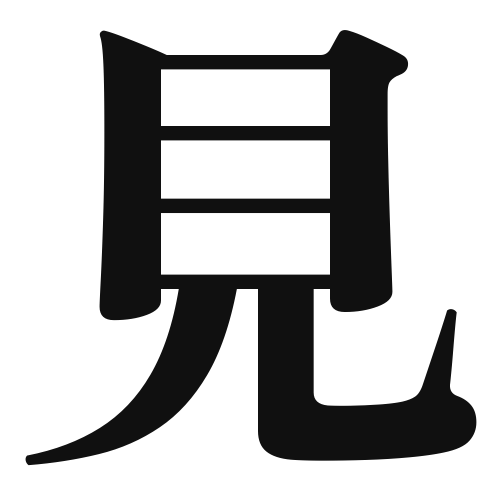1. Overview of Meaning
The kanji “見” (pronounced “mi” or “ken”) means “to see” or “to look.” It represents the act of perceiving something visually and is often associated with observation and understanding.
2. Formation and Radical
Formation of the Kanji: The kanji “見” is classified as a pictogram, originally depicting an eye looking at something. It conveys the concept of sight and perception.
Radical: The radical for “見” is also “見,” which is used in other kanji related to sight and vision.
3. Examples of Usage
Common Words and Phrases: Some frequently used words that include “見” are:
- 見る (miru) – to see
- 見える (mieru) – to be visible
- 見学 (kengaku) – study by observation
Example Sentences in Daily Conversation:
- 映画を見ましたか? (Eiga o mimashita ka?) – Did you see the movie?
- あの山が見えます。 (Ano yama ga miemasu.) – I can see that mountain.
4. Synonyms and Antonyms
Similar Kanji: A similar kanji is “視” (shi), which also relates to sight but emphasizes the act of viewing or observing in a more formal context.
Opposite Kanji: An antonym is “見えない” (mienai), meaning “not visible” or “cannot see,” which indicates the absence of sight.
5. Cultural and Historical Background
Relation to Japanese Culture: The concept of “seeing” is significant in Japanese culture, often associated with understanding and insight. The act of observing nature, for example, is deeply rooted in traditional Japanese aesthetics.
Proverbs and Idioms: One common proverb is “目は心の窓” (Me wa kokoro no mado), which translates to “The eyes are the windows to the heart,” emphasizing the connection between sight and emotional understanding.
